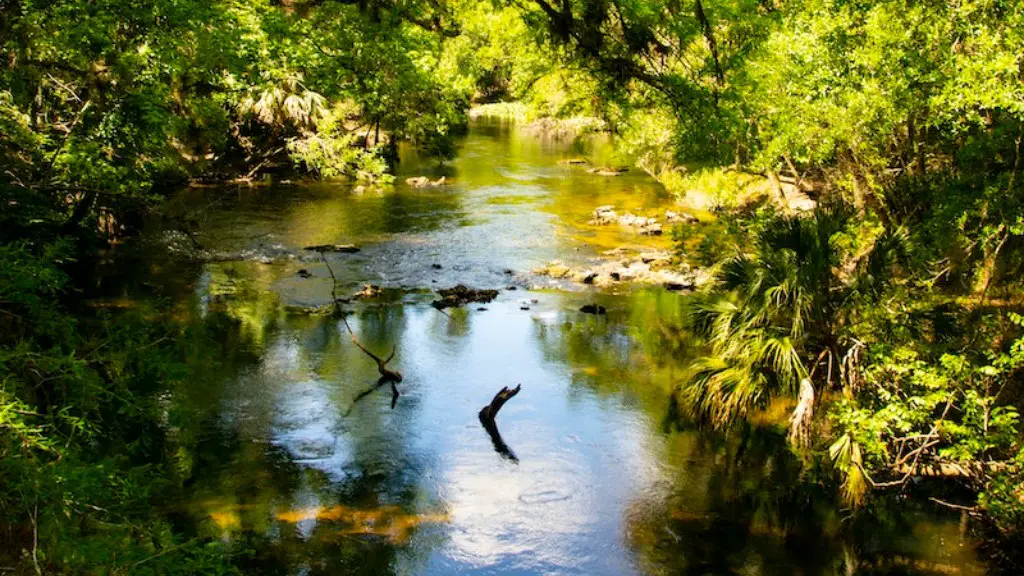The Mississippi River is one of the most iconic rivers in America, known for its striking beauty, interesting wildlife, and cultural significance. Many fishermen flock to the river to enjoy its sensational waters, curious about what fish they may be able to catch. One of the most common questions is “Are there bass in the Mississippi River?”
Bass can indeed be found in the Mississippi River, as it is home to multiple species of bass in different sections of the river thanks to its varying depths and sizes. Largemouth bass is the main species of bass found here, though several other species also make their homes in various parts of the river.
For a successful catch, one must first understand the behavior of the specific species of bass. Largemouth bass are generally found in the slow-moving pools and deep backwaters of the Mississippi River, as they prefer the warmer waters near the bottom. Smallmouth bass, on the other hand, prefer the river’s swift currents, hanging out in the areas with high oxygen levels.
It is important to note, however, that environmental changes can have an effect on the bass populations in the Mississippi River. The river has become increasingly polluted over the years, as runoff from farms and other sources find their way into the waters. This creates an imbalance in the ecosystems, affecting the health of the bass and other aquatic life. In addition, overfishing has become a problem in the recent years, as the popularity of bass fishing has grown.
Experts suggest that anglers should take extra care when fishing in the Mississippi River, as it has become increasingly fragile. Bass populations need to be monitored in order to prevent overfishing and help with conservation efforts. It is especially important to be mindful of the size, species, and number of fish that are taken from the water.
In conclusion, bass can be found in the Mississippi River and anglers can enjoy catching them. However, one should be mindful of their environment and take the necessary precautions to ensure that the fish populations remain healthy.
Natural Resources
The Mississippi River provides a wealth of natural resources, such as water, vegetation, fish, and wildlife. An important aspect of these resources is that they must be managed sustainably in order to keep the river’s ecosystems healthy. The proper management of the natural resources of the Mississippi River helps to promote a healthy environment which can support the diverse wildlife that call the river home.
One of the most important resources of the Mississippi River is water, as it is essential for the health and well-being of aquatic life. Water quality is monitored by the U.S. Geological Survey, and any changes in the chemical and physical characteristics of the water are tracked. This helps to ensure that any changes have a minimal impact on the ecosystem of the river. In addition, management programs are in place to control and mitigate sedimentation, nutrient pollution, and other environmental impacts.
In addition to water, vegetation is an important resource of the Mississippi River. Vegetation, such as trees and plants, provide food, shelter, and habitat for the diverse wildlife found in the river. The vegetation helps to protect and stabilize the riverbanks, reducing the risk of floods and soil erosion. Moreover, the plants help to filter pollutants, improving the water quality of the river.
Fish are another natural resource of the Mississippi River, and they can provide a sustainable source of food and recreation. Many species of fish inhabit the river, including stripers, bass, and crappie. However, overfishing can have a significant impact on the fish populations, which is why proper management is important. Anglers should follow the regulations set forth by the Mississippi Department of Wildlife, Fisheries, and Parks, so that fish populations remain healthy.
Overall, the Mississippi River offers a wealth of natural resources that must be monitored and managed sustainably in order to ensure the health of the river’s ecosystems. Management of water quality, vegetation, and fish is essential for keeping the river healthy for generations to come.
Environmental Impacts
The Mississippi River suffers from many environmental impacts due to human activity, such as pollution and habitat destruction. These activities have a negative effect on the health of the river, which can damage the ecosystems and negatively impact the wildlife found in it. It is important to be aware of the environmental impacts of the river, as well as understand their causes and effects, so that we can work to mitigate them.
Pollution is one of the major environmental concerns of the Mississippi River, due to the high levels of chemical and biological contamination introduced by human activities. Sources of pollution include wastewater, agricultural runoff, and industrial sources. The pollutants can enter the river either through direct or indirect sources, and can accumulate in the water, affecting the health of aquatic animals and plants.
Habitat destruction is another major issue facing the Mississippi River. The river has experienced significant changes over the years due to the construction of dams and levies. This has caused water levels to rise, reducing the amount of flood plain habitat available for fish, insects, and other wildlife. Moreover, the construction of the dams has reduced the flow of the river, resulting in decreased oxygen levels in the water.
Invasive species are yet another environmental concern for the Mississippi River. Invasive species, such as the zebra mussel, Asian carp, and largemouth bass, have established populations in the river and can have a negative impact on the native species. Invasive species can disrupt the food web, outcompete native species for food and habitat, and cause changes in the habitats of the river.
Overall, the Mississippi River is facing numerous environmental threats due to human activity. It is important to be aware of these threats and their effects, so that we can work together to reduce them. Conservation efforts and management strategies must be implemented in order to protect the river and its ecosystems.
Fishing Regulations
Fishing regulations play an important role in preserving the health of the Mississippi River and its fish populations. Fishing regulations are regulations put in place by the government to ensure that fishermen follow the rules, ensuring the sustainability of the fish populations. In the case of the Mississippi River, these regulations are enforced by the Mississippi Department of Wildlife, Fisheries, and Parks.
The regulations vary depending on the type of fish being fished for, as different species require different management strategies. For example, the size and number of bass that can be kept, as well as the fishing methods that can be used, are regulated. These regulations are designed to ensure that the fish populations remain healthy and to protect the river for future generations.
In addition to size and number limits, fishing regulations also restrict or ban certain fishing techniques. For example, the use of gill nets in the Mississippi River is prohibited, as they can be extremely damaging to the fish populations. Furthermore, the use of bait is limited to artificial lures, in order to reduce the mortality rate of the fish.
Overall, fishing regulations are an essential part of ensuring that the Mississippi River is managed sustainably. These regulations help to protect the fish populations, as well as ensure that everyone is adhering to the rules. Anglers should familiarize themselves with the regulations before heading out onto the river, so that they can enjoy a successful and responsible catch.
Conservation Efforts
In order to maintain the health of the Mississippi River and its ecosystems, conservation efforts must be implemented. Conservation is the management of natural resources in order to prevent the destruction or loss of habitats and wildlife. It involves practices such as the restoration of ecosystems, the protection of endangered species, and the mitigation of pollution.
One of the main focuses of conservation efforts in the Mississippi River is pollution control and water quality management. Programs are in place to monitor water quality and reduce levels of pollutants, such as fertilizers and sewage. In addition, restoration projects are being undertaken to improve the health of the river and its ecosystems.
Conservation efforts also aim to protect and restore habitats and wildlife. For example, efforts are made to protect endangered species, such as the piping plover and the pallid sturgeon, both of which live in the Mississippi. Programmes are in place to restore and protect wildlife habitats, such as wetlands and floodplains, that are important for the health of the river.
Finally, conservation efforts focus on increasing public awareness and education. Programmes are in place to teach people about the importance of the Mississippi River and its ecosystems. This helps to ensure that the public is informed and that proper practices, such as catch and release, are followed.
Overall, conservation efforts are critical for maintaining the health of the Mississippi River and its ecosystems. Proper management of natural resources, habitats, and wildlife is essential for protecting the river and ensuring that it remains healthy for future generations.





